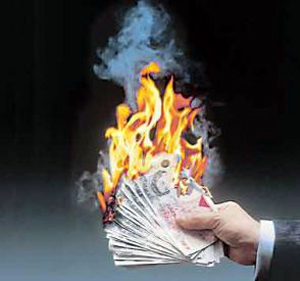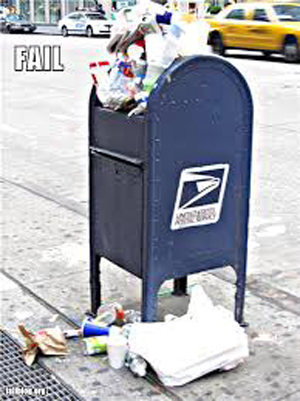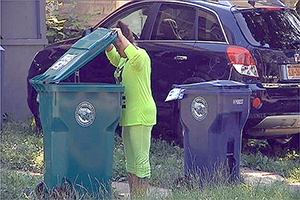
Dyster Recycling Program a Bust;
|
||||||||||
|---|---|---|---|---|---|---|---|---|---|---|
The numbers are in. And Niagara Falls Mayor Paul Dyster’s recycling plan, foisted on city residents and businesses a year ago, has turned out to be a monumental failure. According to documents from the city Controller’s office, the amount the city earned in rebates from Modern Disposal Corp. for recycling has amounted to just $3,685 for the five month period starting March 19. Don’t say we didn’t warn you. Dyster and City Administrator Donna Owens threw a lot of figures around last year in the run up to the recycling program’s implementation. New totes for both garbage and recyclables were purchased at a cost of $2.1 million. Each has been implanted with a microchip that would enable authorities to track a stolen one down. Additionally, the creation of a new city department, headed up by Dyster campaign worker Brook D’Angelo, costs the city an additional $80,000 a year in salaries and benefits. On top of that, the garbage hauling contract Dyster inked with Modern cost the city more than $770,000 more annually than the former contract. Variously, Dyster and Owens claimed that between $500,000 and $1 million would be saved annually to offset those costs. As reality sunk in, that figure was amended to $100,000. But, if the results obtained between March and July are any indication, the city can expect to see a total income of just $8,844 for the year. Like most of Dyster’s plans, the ill-conceived recycling program was sprung on the public and the city Council at the last minute, with the mayor stressing the need for immediate approval. At first the Council balked, and scheduled a public hearing about the plan. Dyster sent in Owens, who was unable to answer many questions from the public. Reduced to tears when local businessman and longtime Dyster supporter Craig Avery suggested her performance was so bad she should resign, Owens retreated and the Council passed Dyster’s plan. Now, a year later, we can see the recycling program for what it really is. Dyster spent $2.1 million in startup costs, and took on new expenses totaling $850,000 per year in order to make $8,844 annually. City residents would have to recycle at a rate 10 times more than they are now just to break even on the ongoing expenses. And even the most costly garbage totes on the market have a lifespan of just 10 to 15 years. None come with a warranty longer than 10 years. In other words, in 2024, the city again will have to come up with millions to buy new ones. The great likelihood is that Dyster didn’t even think about the plan being cost effective. Niagara Falls had, and still has, the poorest recycling rate of any municipality in Western New York. He was going to turn that around, regardless of the cost. It would, to his way of thinking, constitute an “achievement.” Sadly, it has been a failure at every level. Small businesses were forced to lease dumpsters after being kicked off of the service provided by the city. The added expense made the cost of doing business in Niagara Falls even less attractive. Vacant lots and alleyways are now choked with rubbish Modern isn’t required to haul away under the terms of the contract inked by the mayor. Like other Dyster initiatives arrived at with no input whatsoever from those in the community most affected by them, the recycling ordinance is an engineered disaster, a series of trials and tribulations that will result in an attempt to fix a problem that didn't exist in the first place. In much the same way as his new $44 million train station is being massively overbuilt based on Amtrak requirements for a station servicing fewer than 100 riders a day, Dyster’s recycling plan offered an extravagant and expensive solution when a cheap fix would have sufficed nicely. Incompetent? Based on the disastrous recycling program alone, Dyster would have been fired from any private company in the world by now. Spending nearly $3 million over one year in order to earn $8,844 would make any fiscally responsible board of directors choke on their morning coffee. Eight years of poor financial decisions have placed the city on the brink of bankruptcy, with the state’s Financial Restructuring Board poised to step in. The FBI says Niagara Falls is the most dangerous city in New York, and the Restructuring Board shows it to be the most highly taxed as well. This despite more than $100 million in casino revenue going in and out of City Hall. Can the city afford another four years of Dyster the Incompetent?
|


